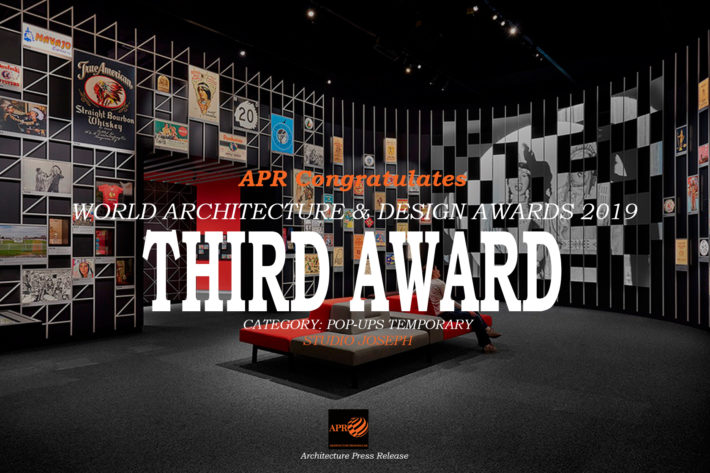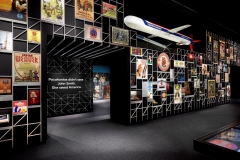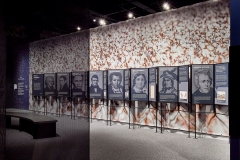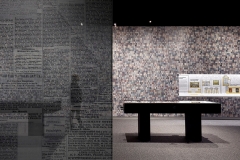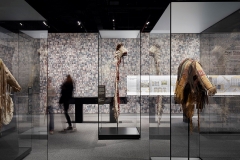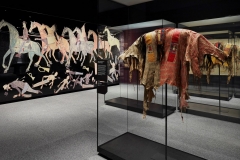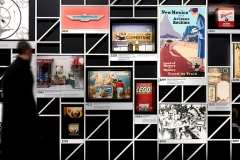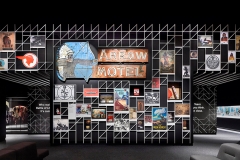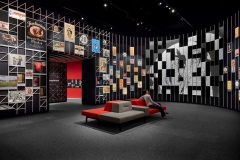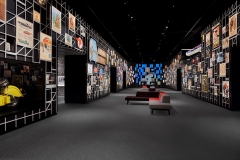“Americans”—a nod to the name given to this country’s indigenous peoples by European settlers—is a modern, dynamic, multimedia permanent display. The 9,200-square-foot Smithsonian exhibition at the National Museum of the American Indian in Washington, D.C. deconstructs conflicts and decisions involving native peoples at specific historic moments and questions the ubiquity of a demographic in American pop-culture that comprises only 1% of the country’s population. Innovative, immersive environments use visceral media technology and tactile, multi-layered experiences.
World Architecture & Design Awards 2019
Third Award | Category: Pop-Ups Temporary
Architects: Wendy Joseph
Studio: Studio Joseph
Team Members: Design: Anita Jorgensen Lighting Design; Structural Engineering: Hage Engineering; Electrical Engineering: James Posey Associates; LEED Commissioning: Re:Vision Architecture; Fabrication/Graphics: Capitol Museum Services; Fabrication: Duggal; Cost Estimator: Lee Haase; Architectural contractor: BeltBuilt; Photography: Thomas Loof
Country: United States
Website: www.studiojoseph.com
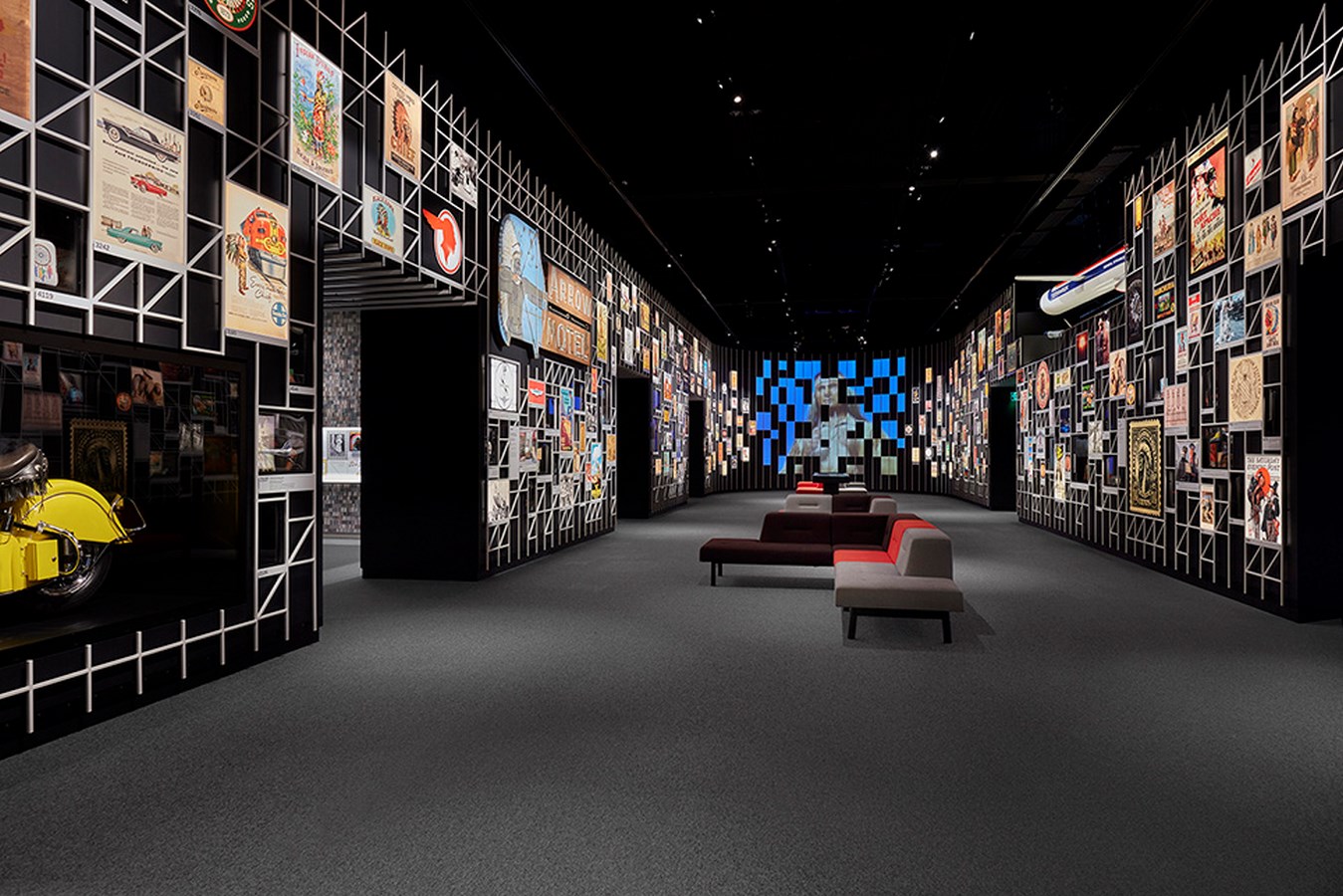
Within the central gallery entitled “Indians Everywhere,” a powder-coated ¾-inch, square tubular steel armature holds three centuries of American objects, graphics and photography. Diverse artifacts such as a classic 1948 Indian Chief motorcycle, the Tomahawk missile and Navajo Barbie are showcased in this intricate, display system that required creativity and technical expertise. To insure an economic and efficient installation, the back display consists of a grid with 12-inch-deep MDF object cases that integrate signage, photographs and objects. Thirty-two sections of framework, each 5’ wide and 14’ tall, connect with imperceptible male/female joints mounted to the backup cabinetry system. The design result is a larger-than-life, historical narrative interpreted within a bold, modern aesthetic.
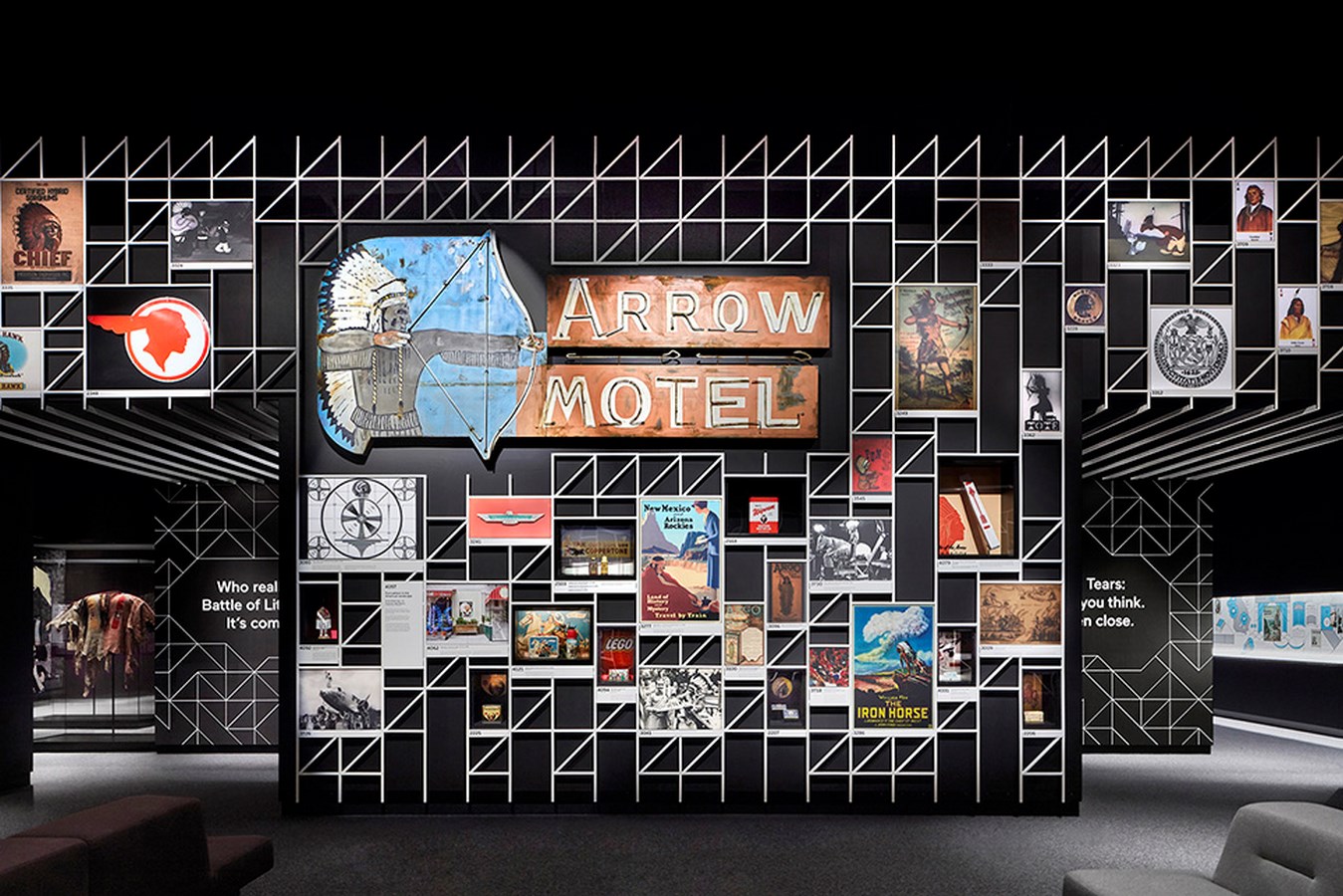
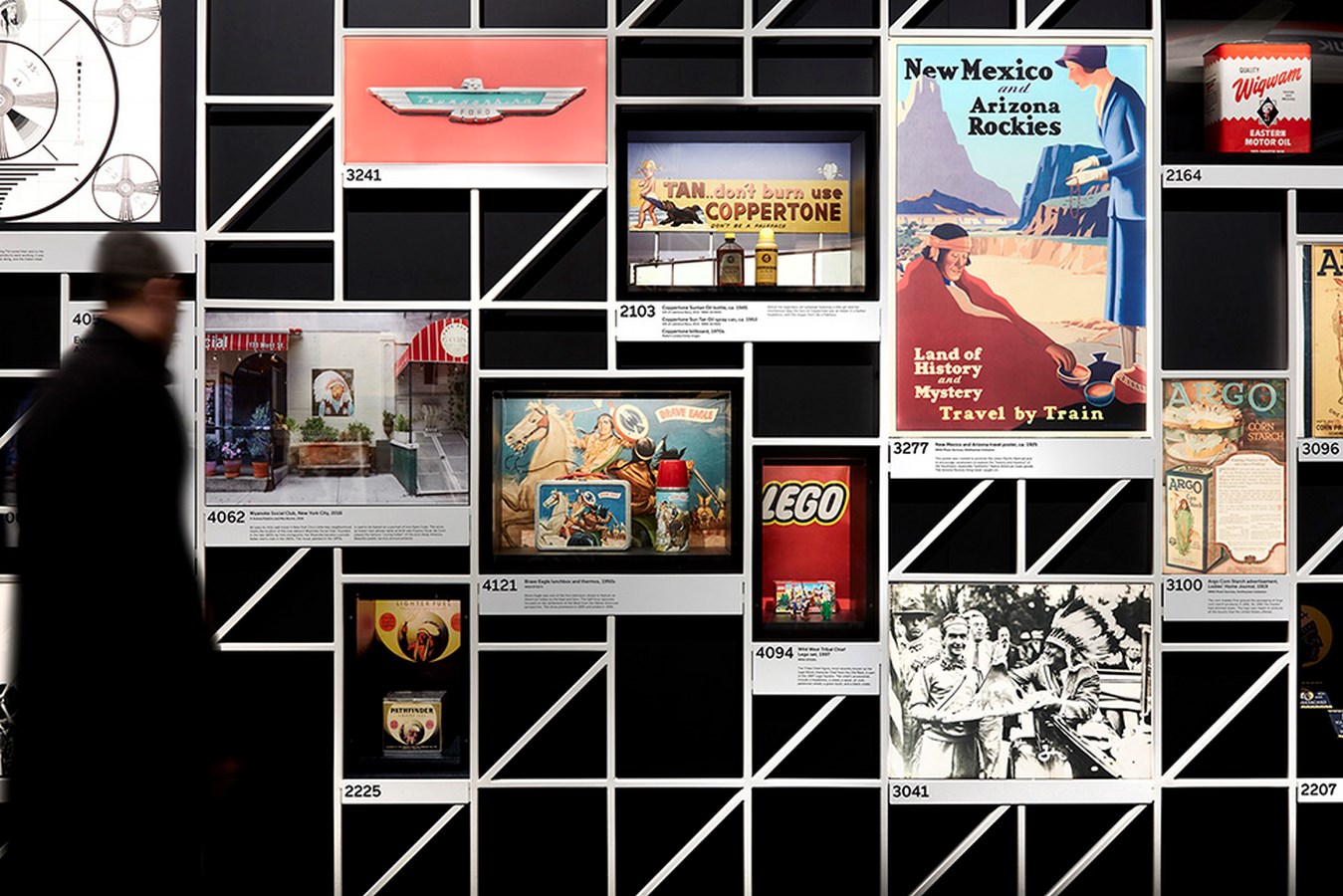
Interactive screens in the center of the gallery allow visitors to search for their favorite “Indian” iconography and decode the information. At the far end of the room, television episodes and “spaghetti westerns” projection map onto a series of panels. This fragmented projection allows for seamless content integration without subordinating the gallery into mere theater. Comfortable, modular seating—highly unusual for the Smithsonian Institution— encourages visitors to linger, reflect and share experiences with others, while absorbing the magnitude of the installation content.
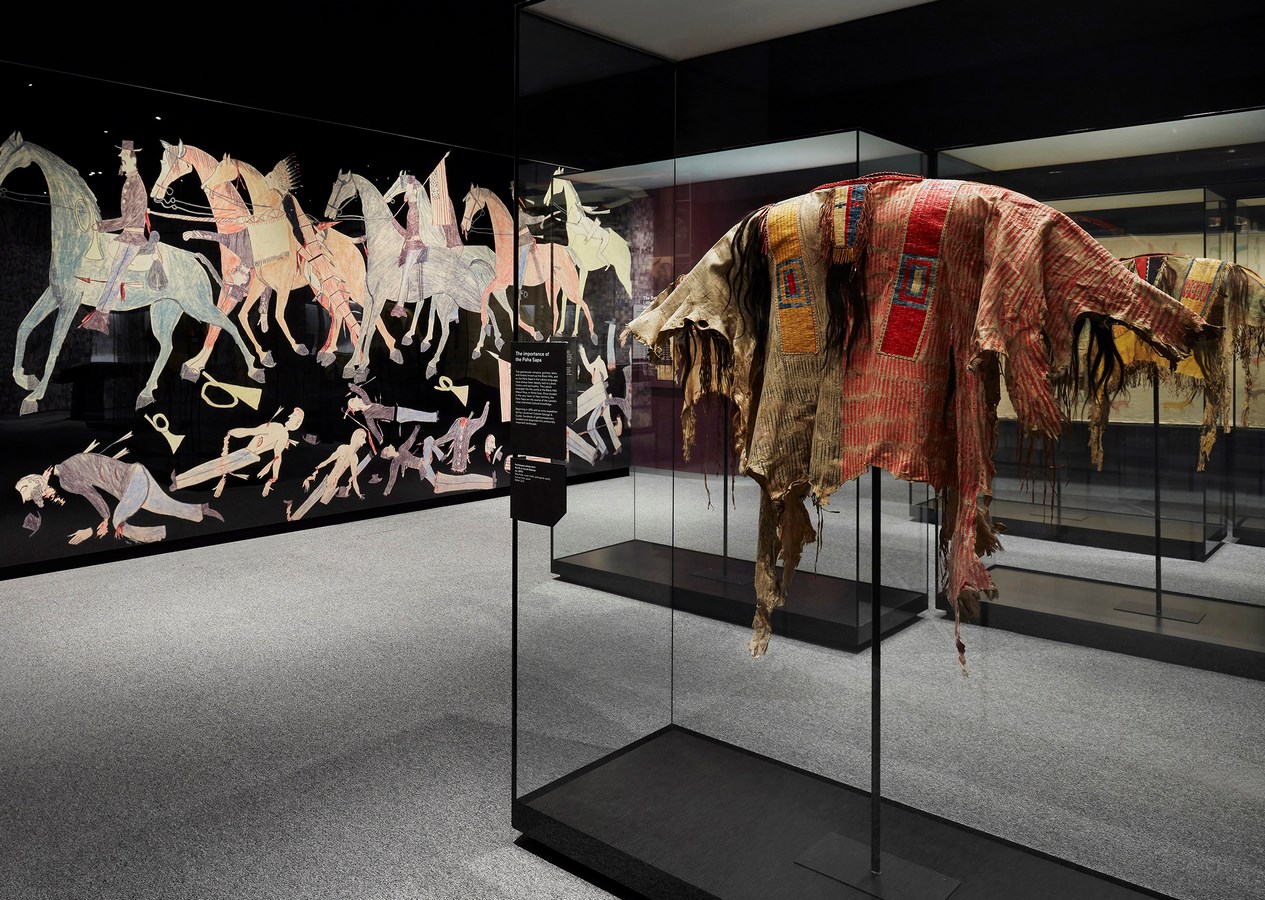
Individual galleries entering off of “Indians Everywhere” address familiar, yet often misunderstood historical topics—Pocahontas, the Battle of Little Bighorn, Thanksgiving, and the Trail of Tears. To bring relevance to content and engage the visitor, media and technology are skillfully employed for maximum effect. Bold graphic motifs coupled with pithy, provocative quotes hold one’s interest and inspire the questioning of common assumptions. By understanding the past, visitors acknowledge the cultural complexity of native peoples in America’s collective history. As evidence of the Battle of Little Big Horn, Indian “regalia” and hand drawings on muslin, displayed against a graphic enlargement of a drawing by an Indian at the battle itself are some of the finest artifacts that exist. Each display case follows prescribed Indian ritual using herbs and solar orientation according to tribal custom.
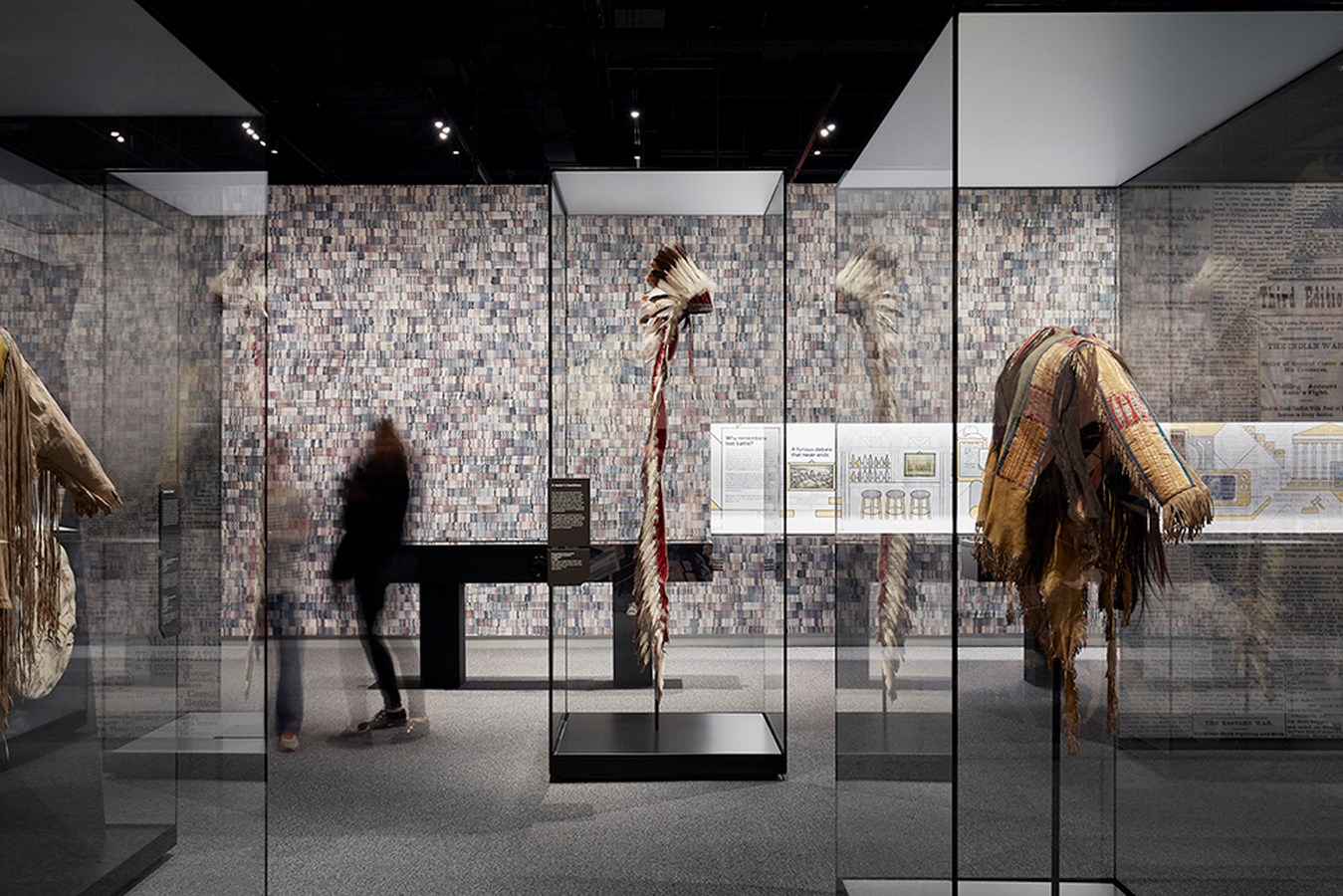
Educational resources such as interactive museum object “decoder” tables, a robust online object library, and a dedicated gallery with an analog visitor sharing area facilitate community learning and engagement. Within this safe space, visitors question the past and define America’s future.
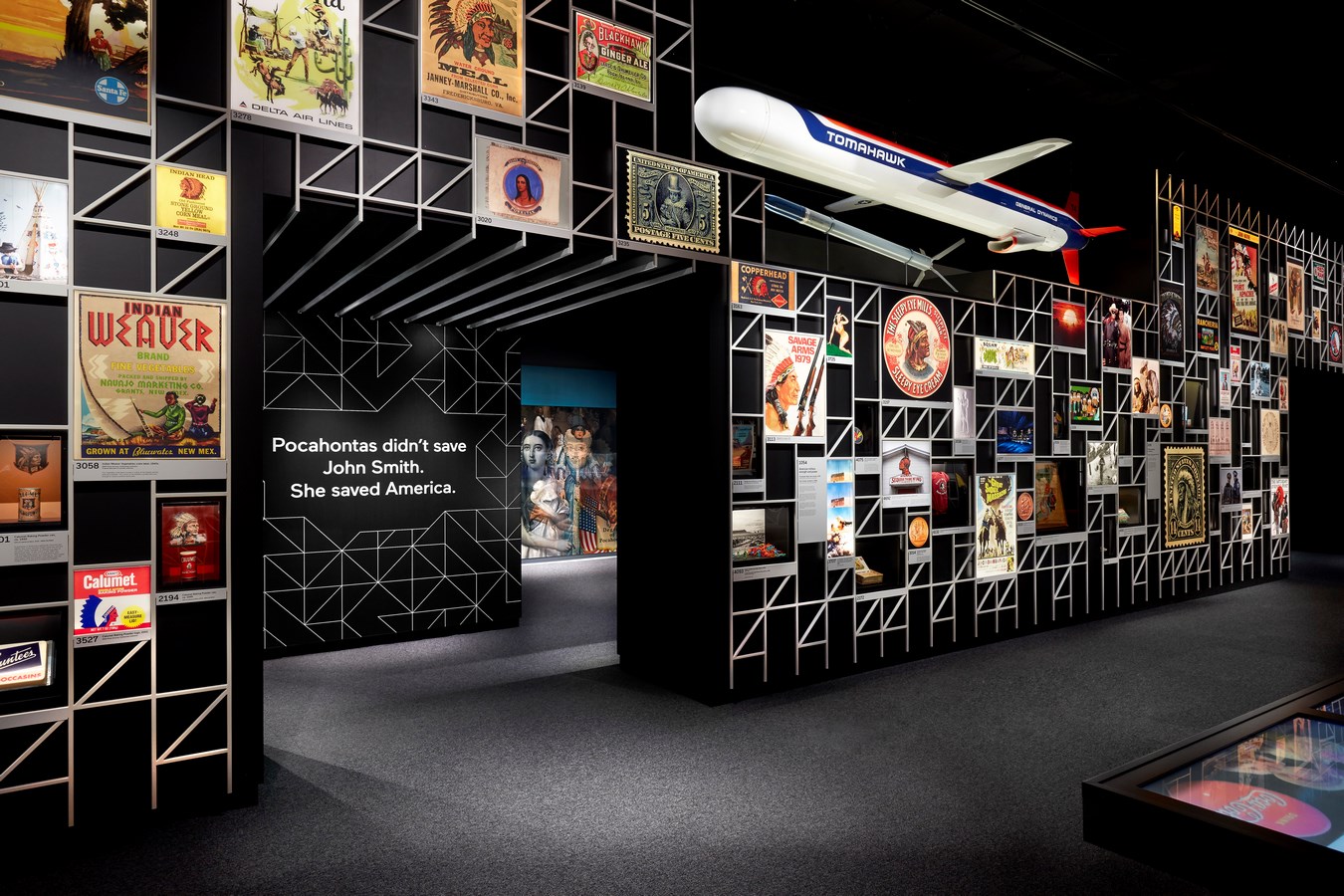
Another great opportunity. APR’s next award Global Future Design Awards 2019 is open for Registration. Don’t miss the chance, its a huge platform for architects.


